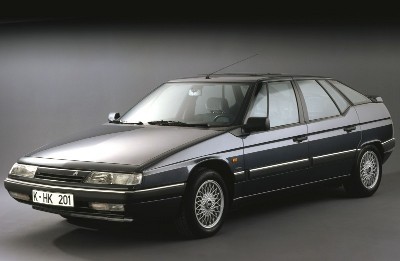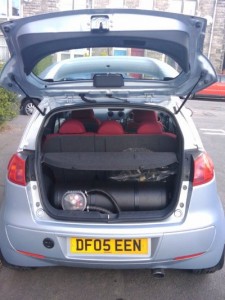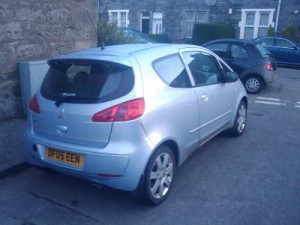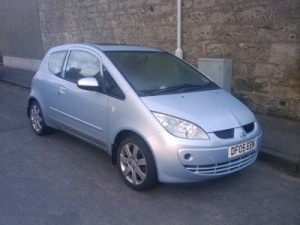What would you do if you knew you had enough free cash to last you Four years? Save it? Take a holiday? Buy a new car? Quit your job? Go travelling?
What then if you had no debts, had a nest-egg already saved and your mortgage taken care of?
It’s a tough decision isn’t it! I bet nobody in the world would want that choice. Do you want Cake, Jelly or Ice-cream?
For me, I decided to take time out to travel and do my own thing. Twelve months after leaving my job and I can honestly say it was the best thing I ever did in my life. Its given me time to decompress and allow me the opportunity to work on projects that I always wanted to do but never really got round to. It also gives me the option to choose wisely the next path I take, like returning to work in a company I really want to work in, instead of coming from a drive of desperation and accepting the first offer. Instead, there is the option to go back to formal Education, or even start a business. These options really didn’t feel viable from when I was working at a salaried office job.
Every day I get to do the activities I really want to do; study Languages, read up Personal Development and Computer Software, whilst setting my own schedule. I can go meet friends for coffee, watch a movie, or sleep in. The surprising thing is that I feel like I am the least lazy I have ever been in my life! Although I might “work” for less than 6 hours a day, those are action packed 6 hours and I love every minute of it. And the quality of my work output has never been better. I never learned a new language as quickly as I have done, and I can quickly find elegant solutions to software solutions, whether it be debugging, looking at a new plugin for wordpress or doing an online programming test. I don’t have to worry about earning money for 4 years because I know what I have will last that long. I am sure that I will find something to extend that time, so long as I am open minded enough to search and find it.
You might ask how on earth I managed to get into this seemingly privileged situation in the first place. It all started with the decision to reject the situation I was in and to search for a better solution. It was also a terrifying decision to make. The decision to stop working and stop a “career path” flew in the face of everyone around me. I got comments from close friends and family such as ..
“You already have a decent job and life, why throw it all away?”
“So if you take a year out now, when do you plan on getting married?”
“What will you do when you run out of money?”
“If you leave you will never have things as good as you do now”
“You are jeopardizing your career by voluntarily taking gaps”
If someone told me earlier that this was all going to happen, I simply could not have believed it. It was 6 months after leaving my comfortable but boring life in UK. I was in Tokyo, working day and night just to scrape together a meagre existence living in a shared dormitory with 12 people. I remember walking outside seeing homeless people and envying them. They seemingly had all the time in the world and they had their own little cardboard box homes to live in and they weren’t about to get kicked out the country because they were about to run out of money!
Every day was a real grind. New requests came in for new features to the project I was working on, there seemed to be no end in sight. I was taking two or three English teaching classes per week to have some kind of cash flow whilst waiting for the big project payoff. My expenditures were reduced to coffee at MacDonalds (taking the laptop to work there at the same time, of course) and fishing out the reduced price food at the local supermarket. At the same time I was searching for new contracts or jobs to keep going. And all the while still studying Japanese!
I distinctly remember going for an interview at a company and failing miserably at a relatively simple programming test. I realised at that point I was burning out. But I couldn’t stop on any front because everything was so important.
There were times I just couldn’t understand how things could get this way. Only 6 months earlier I was living the comparative dream in UK. It was an 8 out of 10 life. Boring, but no overtime, easy work with no pushy clients to deal with, my own car, my own room! And I gave up that cushy life for this. The worst part was I had freely chosen this path. It felt like the biggest mistake I had ever made. I was very ready to “vanish” and go back home, defeated.
But things got better. Finally the project came to an end and I found myself finally with free time. I still had other commitments but the biggest one had finally let up and I had some time to myself. I had the time to search for a new place to live and found a room in a guest house. Because of the 2011 earthquake, there was less foreigner demand for rooms so I managed to get a reasonable discount. It was still twice the price of the dormitory, but half the price of a single studio apartment. It was a decent sized room (for central Tokyo) with double bed and my very own air conditioner! I had never appreciated having my own private space before in my life as much as I did at that point.
Things got better still. A CV I sent out a few months earlier to a recruiter website had been picked up by another recruitment company, and I was offered an interview. I didn’t have high hopes because I had already had at least 10 interviews in various companies in Tokyo. Only one job offer came from that and the salary was too low for me to reasonably accept. However, I got the phone call and I was offered a 1 year contract. What’s more is the recruiters had negotiated a salary 33% more than I had asked for! I couldn’t believe it! A huge weight had been lifted off my shoulders.
At this new job, they had regular hours like a real company. I was so relieved that I could go to work at 10am and leave at 7pm. That was still worse hours than I had back in UK, but compared to my previous work it was a dream. And they actually paid for overtime!
I still kept up the routine of eating cheaply. I bought myself a rice cooker and bought salad and meat daily. There was a bento shop near my place, so I could eat lunch for just 250 yen (USD2.50) That food tasted unbelievably tasty, considering I couldn’t afford to eat that just a short time earlier. Each month I was able to save about 55% of my take-home wages without really trying. I was still living a reasonable life; going for the occasional lunch at a restaurant, going out at weekends and holidaying to foreign countries.
By the end of the contract, I had saved up a healthy savings account; enough to live for 18 months in Tokyo at my current burn rate. However my plans had changed and I wanted to learn Chinese. I made the decision to move to Taiwan under a Working Holiday Visa. This was a new visa for UK Citizens under 30, and because I was 29 at the time it made perfect sense.
It turns out that living costs in Taiwan are significantly less than that of Japan, so my 18 months forecast actually turned into 4 years.
But more important than the money is the experience. From my experiences at the bottom, I now have the capacity to work 12 hours non-stop on a project, or to get through the wall when it comes to studying or reading books. I have the drive now to push myself forward and find out more things that I didn’t have before. The money merely provides time such that I can use to study or work on new projects.
How to make this a reality for you
Despite these savings, and the experience of doing it all already, there was still resistance to the idea of leaving and starting all over again. There was still the chance that everything could go horribly wrong and I lose everything with nothing to show for it. Or worse, I couldn’t pick up a job because I had Another huge gap in my career.
The biggest issue is taking the decision to step out of the current situation and into the unknown. It took me one full year of frightening uncertainty and having things worse to get to the position of earning enough money in one year to last for four.
One thing’s for sure, you can never find out the solutions until after you step out into the wilderness and summon the courage to find out for yourself. And it really does take life or death situations like that in order to push you to find a solution. Things will almost certainly get worse, but I promise if you keep on going and searching for new answers, you will find the ultimately better solution.




